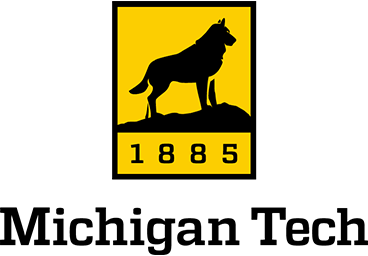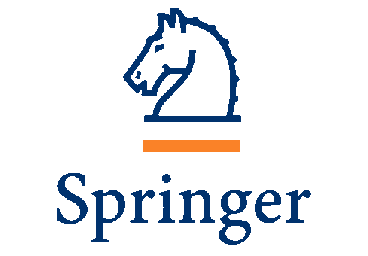Multiphysics Course @ Zhen Liu
Intro
This is the first week of your multiphysics trip. We will figure out what is multiphysics. You possibly have your own understanding of physics. Just like the little game in the following. Try to move the blue block and see what will happen. You may then think about the physics behind the game. But, the physics that we will be talking about will be slightly different. Keep this question in mind as we get through the week.
Plan
"What is multiphysics?" is the major question and topic of Week 1. You will first take a lecture that gives out definitions, basic concepts, examples, classifications, applications, and other basics you will need to know about multiphysics. Then, we will have a virtual lab, in which you will play with multiphysics using existing code from the Internet to get some first-hand experience with multiphysics.
Objectives
By the end of the week, you will need to be able to
Tasks and Schedule
Intro
We are now entering the second week. We will learn how to do multiphysics this week. The following are a series of simulations that is not about how to do multiphysics, but instead, what you will get after you know how to multiphysics. Are you looking forward to what will happen? :). You can explore the simulations, most of which are about mechanics and hydrodynamics. Some are interactive...you may get some surprises.
Plan
"How to do multiphysics?" is the major question and topic of Week 2. You will first take a lecture that gives out a typical procedure for solving multiphysics problems. Then, we will have a virtual lab, in which you will solve a seepage problem with Matlab. This is a monolithic physics problem. But the procedure will be the same.
Objectives
By the end of the week, you will need to be able to
Tasks and Schedule
Intro
It is Week 3 now. We will start to learn some math. The math is like the language that we will need to understand, discuss, and play multiphysics like professionals. In Week 3, we will try to understand the first math topic: field and tensor first. Do you want to see what a (physical) field looks like? In the following simulation box, try to add some powder and air and then use a wind to blow the particles. You will see the movement of particles, which can be the things that we picture when thinking about a simple field. Adding more things will make it more colorful.
Powder and Air Simulation GamePlan
You will first take a lecture that introduces what we need to know about the field and tensor analysis. Then, we will have a virtual lab, in which you will implement different operations in vector and tensor analysis using Numpy in Python.
Objectives
By the end of the week, you will need to be able to
Tasks and Schedule
Intro
In Week 4, we will continue to grab more math tools for multiphysics. We will try to put the tensors and their operators together to construct some fields that can be used to describe the states of and/or processes in physical field(s). These equations, i.e., partial differential equations, are not brand-new to you. You might have them in the literature many times. More than that, they are directly relevant to the differential equations that you learned in Calculus and other undergraduate-level math courses. Please take a look at the following video. It should remind you of something. We will build up our understanding of partial differential equations starting from there.
Plan
We will first see why we need to learning partial differential equations by looking into different types of numerical simulations. Then we will study the classification of second-order partial differential equations, which will be used as the governing equations for a majority of the physical fields. Next, we will see the common partial differential equations. Finally, we will discuss the boundary conditions of partial differential equations. Apart from the theories, we will try to solve different types of partial differential equations.
Objectives
By the end of the week, you will need to be able to
Tasks and Schedule
Intro
Let us move from math to monolithic physics in this week. We will try to understand a very simple physical field: thermal field for heat transfer. Heat transfer is ubiquitous. But do you really understand the phenomena? A lot of terms related to heat transfer are used in daily life such as temperature, heat, hot, cool down, and radiation. Before we start, you can take a look at the following video. It could be decent warming up for what we will learn.
Plan
Since this is the first monolithic physical field discussed in this course, we will give out an outline for general transport problems first, which include heat transfer and many other physical fields involving the conservation of some quantities such as heat, momentum, and energy. Based on the understanding of the transport problems, it will easy to reach the formulation and understanding of heat transfer. We will learn the governing equation, typical thermal properties of materials, heat transfer mechanisms, and boundary conditions.
Objectives
By the end of the week, you will need to be able to
Tasks and Schedule
Intro
After the transport of heat, we will be exploring another typical type of transport phenomenon: the transport of water in soils (or other porous materials). You should, more or less, have some experience with groundwater, no matter in research, daily observations, or even from news. In the following simulation, you can start with a template like "Rural vs. urban areas". Then click "run", and you will observe how water moves and gathers in the ground. Even without much knowledge about the groundwater movement, we all have enough common sense to imagine the processes, right? Next, let us learn the real physics and math formulation so that we can analyze and simulate such processes in a scientific way.
Plan
Distinct from what we did in heat transfer (from general transport to specific heat transfer), in this week for groundwater, we will start from the key physical law: Darcy's law, which is analogous to Fourier's law in heat transfer. Then we spend more time on the independent variable for describing water movement: water head. The governing equation for the saturated flow will be introduced last because it is relatively simple to understand this based on the knowledge gained in the week for heat transfer. Next, the saturated flow equation will be extended so that the unsaturated flow can also be considered. A seepage problem will be addressed to practice the theories and simulation skills.
Objectives
By the end of the week, you will need to be able to
Tasks and Schedule
Intro
Stress and strain analysis is a basic and core topic in engineering disciplines such as civil engineering and mechanical engineering. In undergraduate-level courses, we mostly talk about objects with simple geometries such as beams, in which simple stress distributions exist. Try the following animation. It will help you remind concepts such as stress, strain, Young's modulus, and their relationships in a beam-shape object. But if we move to more complicated geometries or loading conditions, in which distributions are not 1D, then we need to resort to graduate-level courses such as elasticity, plasticity, and continuous mechanics. In this week, we will introduce the general definitions of stress, strain, and the elastic constants between them (more than one) in a very simple way. Things will get a little bit more complicated because we now deal with vectors (displacement) and second-order tensors (stress, strain), and even higher-order tensors such as stiffness. But you will see that what we will be discussing for the mechanical field is still similar to the transport phenomena introduced in the previous chapters.
Plan
We will start from concepts that we are familiar with, such as the displacement and deformation, which can be easily defined with macroscopic examples and thus more tangible. Then we will move to strains based on the relationships between the displacement and strain. Next, we will jump from the strain to stress via Hooke's law in linearly elastic materials. With the stress, we can establish the governing equation based on the equilibrium of the representative elementary volume. With all the newly introduced relationships, Navier's equation with the displacement as the independent variable can be established. Finally, we will take a look at the boundary conditions to relate the inside of the object/domain to the external loading.
Objectives
By the end of the week, you will need to be able to
Tasks and Schedule
Intro
This is the first multiphysics phenomenon (or multiphysical field) that we discuss in this course. You can see that, it could be understood as an integration of heat transfer and strain and stress analysis. Accordingly, "thermal" and "mechanical" get married and formed a family of "thermomechanical". Click the following icon and you will see how an object deforms with the temperature. If the deformation is constrained in some way, and thermal stress will develop. We will learn how to quantitatively analyze the thermal stress and thermal strain in this week.
(From Purdue University, ME323)
Plan
We will first discuss the couplings between the thermal field and the mechanical field. With the couplings, we can easily extend Navier's equation to including the contribution from the thermal field. Finally, we will spend some time on the thermal expansion coefficient, which is a major property in thermomechanics. The coupling from the mechanical field to the thermal field, i.e., heat generated by mechanical energy dissipation, is much less common thus will not be discussed.
Objectives
By the end of the week, you will need to be able to
Tasks and Schedule
Intro
Bulk water (fluid) movement is everywhere, from the swirling of coffee in your cup to waves and water circular in Lake Superior. It is different from what we learned about the pore water movement, which can be analyzed with a monolithic physical field due to the low flow velocity. Both moment and mass transports need to be considered in bulk water movement. Such transports/movements stem from the oscillation and interaction of molecules, leading to difficulties in accurately simulating the relevant phenomena. To get a feeling of bulk fluid movement, you can drag your mouse in the following black box area. You will add in fluids with motion in that way. You can see how complicated the movement could be in even such a small area. But, no worries, we will grab some necessary tools to simulate basic fluid dynamics processes.
Plan
To smoothly obtain a comprehensive understanding of fluid dynamics, we will start from the classifications of fluid dynamics and flows. Then we will see how to obtain the Navier-Stokes equations, which function as the core of fluid dynamics. We will deepen the understanding of different types of flow by deriving Navier-Stokes equations with different assumptions of flow conditions and material properties.
Objectives
By the end of the week, you will need to be able to
Tasks and Schedule
Intro
The interaction between pore water and a porous skeleton is responsible for many processes such as the settlement of buildings. It could be much more complicated than the interaction between bulk liquid and solid objects due to the complicated internal geometry of the porous skeleton and possibly low scales of the interactions as well as the involvements of more than one fluids. Shown in the following video is the interaction between a solid mineral block and the pore fluid filling the cavity inside the solid, which was obtained using molecular dynamics simulation. As you can see, stresses are built up. The studies of materials consisting of similar fluid-solid interactions are broadly termed poromechanics. If we limit the material properties to linear elasticity, then we have poroelasticity, which can be described by Biot's theory to be introduced this week.
Plan
We will introduce poroelasticity using a bottom-up strategy. That is, we will start with the couplings between the two involved physical fields first. We will define the couplings to create relationships between key quantities in separate fields. Then, we will extend the original governing equation of the involved physical fields with the new couplings. This is distinct from the top-down strategy that we used in most of the previous topics, in which we explored the governing equation first and then discussed the material properties and couplings.
Objectives
By the end of the week, you will need to be able to
Tasks and Schedule
Intro
Let us take a break this week, before we start talking about how to use numerical implementation methods such as the Finite Difference Method (FDM) to solve monolithic physics or multiphysics problems. You can play the following animation by checking "Magnetic Field", "Current", "Force", and "Run". You will see that this animation will be kind of irrelevant to what we will discuss this week. :D... But...hold on...in fact, it is relevant because it is multiphysics (not included in this course though) and will help us get a break. During this break, we will explore a topic that is partially new, i.e., elastodynamics, and spend time to discuss and make a plan for Project 2.
Plan
We will first show how to extend the static version of Navier's equation so that elastodynamics can be considered. Meanwhile, we will reformulate the equation so that two major types of waves can be separated. You will also see the difference between the waves in a short lab. Then, we will figure out what we need to do for Project 2 (final project). You will obtain an initial plan for finishing this project in the lab session.
Objectives
By the end of the week, you will need to be able to
Tasks and Schedule
Intro
The Finite Difference Method (FDM) has been widely used to solve differential equations. For example, it can be used to solve the wave equation that we learned in the previous week. Check the following video. You can see the fancy results of the FDM solution. This method is very easy to understand in theory due to the way it discretizes the governing equation and computational domain. It could be the first option if you want to develop computer code from scratch to numerically solve a mathematical model with partial differential equations.
Plan
We will see how to discretize a partial differential equation including both the time derivative (temporal discretization) and spatial derivatives (spatial discretization). In that process, we will see explicit and implicit methods and associated numerical stability considerations in temporal discretization and typical finite difference schemes and associated accuracy in the spatial discretization. The simple mesh used in domain discretization will also help you understand the meaning of discretization. A detailed discretization process will be illustrated with a typical heat transfer problem with typical boundary conditions to show how to implement the FDM
Objectives
By the end of the week, you will need to be able to
Tasks and Schedule
Intro
The Finite Volume Method (FVM) has been widely used, especially in Computational Fluid Dynamics (CFD). The reason is that, compared with FDM, FVM discretizes the integral form of the governing equation, and thus shows better performance in ensuring mass balance, which is significant in CFD. Also, CFD is by nature associated with cells/volumes in the mesh, which promotes the use of more complicated meshes. In the following video, the basics of FVM and its use in the CFD are introduced. You can quickly get a basic understanding of the FVM and establish a connection with the fluid dynamics that you learned, which will help with your learning this week. Based on this understanding, you will get more details for implementing the FVM.
Plan
We move the differential form of the PDE used in FDM to the integral form used in FVM. Based on a simple but typical mesh, we will see how to discretize the integral form of the equation. We will apply the FVM to solve the same problem that we solved using the FDM. You will see that, in 1D, these two methods generate the same algebraic model.
Objectives
By the end of the week, you will need to be able to
Tasks and Schedule
Intro
Many people, especially those who are not very familiar with numerical simulation, may use the Finite Element Method (FEM) to represent numerical simulation. So, you can see how popular the FEM is. However, compared to FDM and FVM, the FEM is much more complicated in theory and thus harder to understand. The following video presents a very concise introduction to the FEM. It will help you get a rough idea about this numerical implementation/discretization method/technique. It is hard to introduce the FEM within two to three sessions, even in a very simple way that we will take. Instead of getting into the trivial discussions on different types of elements and construction of stiffness matrices, we will focus on the weakform of the PDE and the core idea of discretization using FEM with one lecture. Accordingly, we will be using the lab time to discuss the final project instead of the FEM implementations.
Plan
We will show the idea of the FEM starting from Galerkin's method, which can also help us understand many discretization methods. Then, we will derive the weakform of PDEs. In that process, you will also see how boundary conditions can be included. If time allows, we will go through the discretization of one typical PDE with a simple element.
Objectives
By the end of the week, you will need to be able to
Tasks and Schedule
Intro
This is the last week of this course. The main task is to deliver your final presentation. This will give everybody a platform to showcase what you have learned in this course.
Apart from this main task, I also want to take this opportunity to remind everybody of a few take-home notes that may be helpful to you, especially if you will do something related to multiphysics.
1. Go for Problem-Solving!
2. Go for More Rigorous Math and More Accurate Physics!
3. Go for Better Result Presentations!
http://madebyevan.com/webgl-water
Plan
Every study will deliver his/her final presentation for Project 2.
Objectives
By the end of the week, you will need to be able to
Tasks and Schedule
Additional Courses
More course materials including other free online courses will be published here when available.












